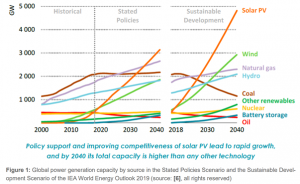Photovoltaic (PV) systems and hybrids need to take over more system responsibility by providing ancillary services since PV penetration is continuously growing, the International Energy Agency (IEA) has said in a report, “PV as an ancillary service provider 2021.”
According to the report, PV is becoming a significant energy source in the future electricity grid worldwide. The specifications, types, needs, and procurement procedures of ancillary services can vary in different power systems and are changing with the progress of the energy transition in many countries.
 PV power curtailment can be an effective and economic measure to achieve a high PV penetration level in electric power systems. Effective curtailment procedures need to be also developed for residential PV.
PV power curtailment can be an effective and economic measure to achieve a high PV penetration level in electric power systems. Effective curtailment procedures need to be also developed for residential PV.
The IEA report suggests that besides local voltage support, such as volt-var control, distributed PV can compensate reactive power demands of consumers and can provide reactive power flexibility at the transmission-distribution interface.
It also states that further regulatory frameworks and grid codes are required for a wider application of ancillary services by PV systems and PV hybrids.
To meet CO2 emission reduction targets and climate goals, PV deployment in the electric power system will increase rapidly in the upcoming years in many countries worldwide. Therefore, the regulatory frameworks and grid codes should cover current power system needs and demands and anticipate the power system needs within the next decade with increasing PV and other renewable energy sources penetration levels.
Besides, PV systems and hybrids can also provide several additional grid support functions and ancillary services beyond the current grid code and regulatory requirements. The regulatory frameworks in many countries should be further developed based on existing functionalities to encourage the application of additional grid support functions and ancillary services.
The report recommends that in the future, PV systems can participate in frequency control reserve markets. However, prequalification procedures and product specifications might need to be adjusted to enable PV system participation.
The IEA and NITI Aayog recently released a report providing valuable suggestions for states in India to manage the challenge of integrating renewables into the grid.
In India, the Central Electricity Regulatory Commission (CERC) has drafted the Ancillary Services Regulations, 2021. The guidelines aim to provide power procurement through the administered process and from the spot market through power exchanges to pay for ancillary services and maintain the grid frequency close to 50 Hz. The regulations have allowed energy storage and demand response resources to participate in providing ancillary services.





